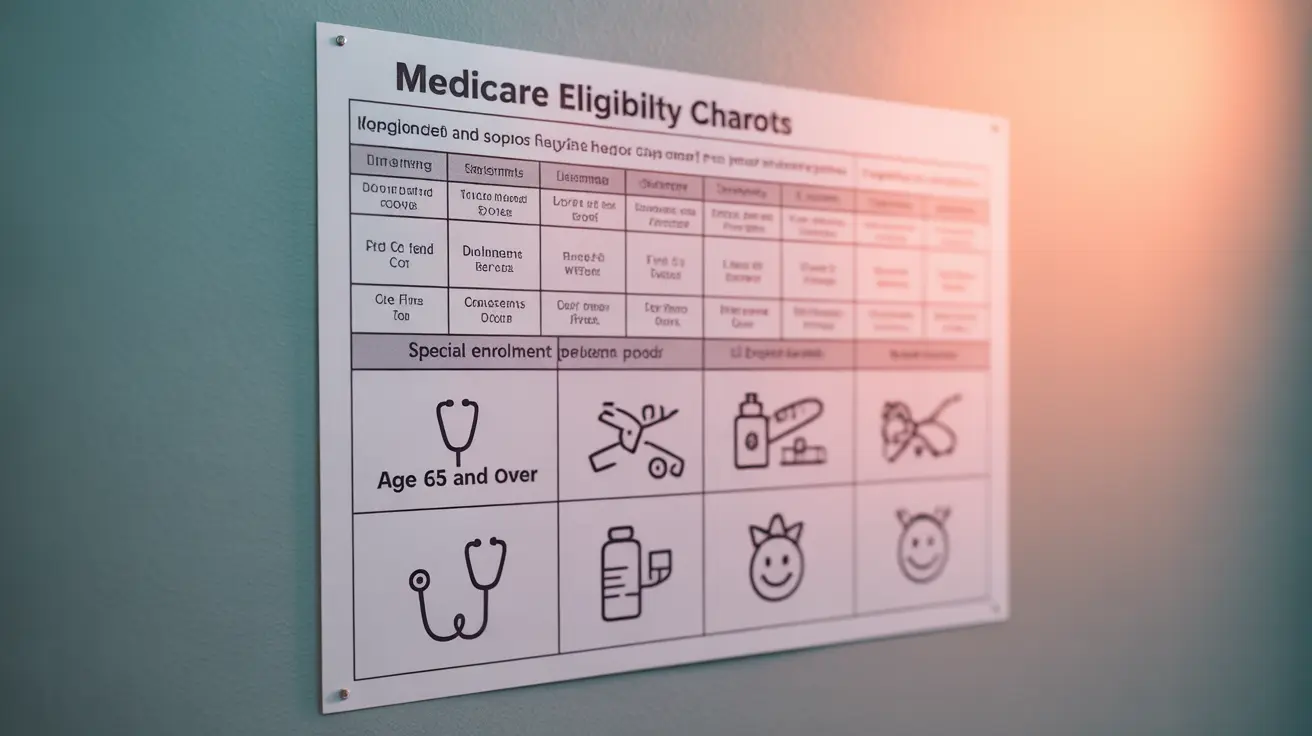Medicare eligibility represents a crucial milestone in your healthcare journey, and understanding when you qualify is essential for proper planning. While age 65 is the standard Medicare eligibility age for most Americans, several factors can affect when and how you become eligible for coverage.
This comprehensive guide will help you navigate Medicare eligibility requirements, important enrollment periods, and special circumstances that might affect your coverage timeline.
Standard Medicare Eligibility Age Requirements
For most Americans, the primary Medicare eligibility age is 65. This hasn't changed since Medicare's inception in 1965, despite other retirement age adjustments in Social Security benefits. At this age, you become eligible for:
- Medicare Part A (Hospital Insurance)
- Medicare Part B (Medical Insurance)
- Medicare Part D (Prescription Drug Coverage)
- Medicare Advantage Plans (Part C)
Early Medicare Eligibility Through Disability
You may qualify for Medicare before age 65 if you meet specific disability requirements:
- Receiving Social Security Disability Insurance (SSDI) for 24 months
- Diagnosed with End-Stage Renal Disease (ESRD)
- Diagnosed with Amyotrophic Lateral Sclerosis (ALS/Lou Gehrig's Disease)
Critical Enrollment Periods
Understanding Medicare enrollment periods is crucial to avoid coverage gaps and potential penalties:
Initial Enrollment Period (IEP)
Your Initial Enrollment Period spans seven months, including:
- 3 months before your 65th birthday month
- Your birthday month
- 3 months after your birthday month
Special Enrollment Period (SEP)
If you're still working and covered by your employer's health plan, you may qualify for a Special Enrollment Period when that coverage ends.
Late Enrollment Penalties and Consequences
Missing your Initial Enrollment Period can result in significant consequences:
- Part B: 10% premium increase for each 12-month period you delayed enrollment
- Part D: 1% of the national base beneficiary premium per month you delayed
- These penalties generally last for as long as you have Medicare coverage
Using Medicare Eligibility Charts Effectively
Medicare eligibility charts serve as valuable planning tools by helping you:
- Identify your specific enrollment periods
- Understand coverage options based on your situation
- Plan for premium payments and potential penalties
- Coordinate with existing healthcare coverage
Frequently Asked Questions
What is the Medicare eligibility age and how does the birth year affect when I can enroll?
The standard Medicare eligibility age is 65, regardless of your birth year. Your birth year primarily affects when your seven-month Initial Enrollment Period begins and ends, as it's centered around your 65th birthday month.
Can I qualify for Medicare before age 65 due to disability or illness?
Yes, you can qualify for Medicare before 65 if you receive Social Security Disability Insurance for 24 months, have End-Stage Renal Disease, or are diagnosed with ALS. These conditions provide immediate or expedited eligibility.
When is the best time to enroll in Medicare to avoid late enrollment penalties?
The best time to enroll is during your Initial Enrollment Period, which begins three months before your 65th birthday month. This ensures timely coverage and helps you avoid late enrollment penalties, unless you qualify for a Special Enrollment Period.
How does missing the initial Medicare enrollment period affect my premiums and coverage?
Missing your Initial Enrollment Period can result in permanent premium penalties: 10% increase for Part B for each 12-month period delayed, and 1% per month for Part D. You may also face gaps in coverage while waiting for the General Enrollment Period.
What does a Medicare eligibility age chart show and how can it help me plan my healthcare coverage?
A Medicare eligibility age chart displays important enrollment periods, coverage options, and timing requirements. It helps you visualize when you need to take action, understand your options, and plan for transitions in healthcare coverage to avoid penalties and gaps.




